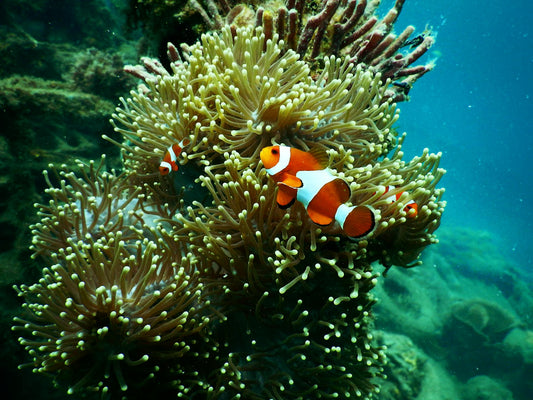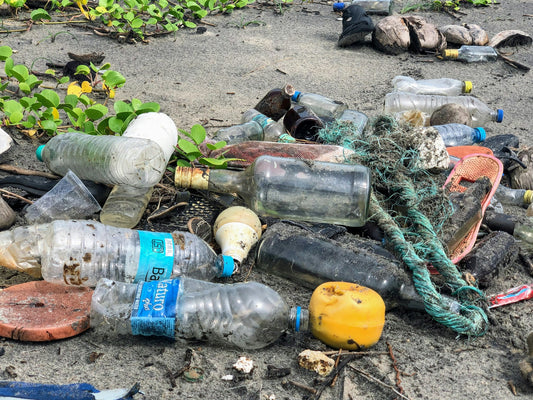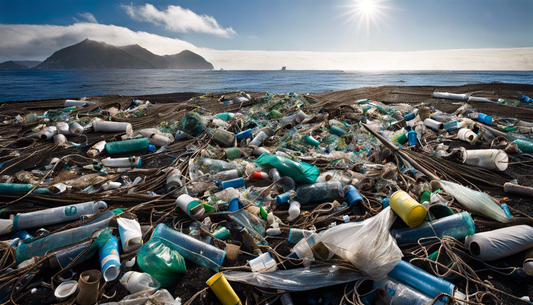Share
Plastic is everywhere, from shopping bags to water bottles and its environmental impact is undeniable.
Oil-based plastics take decades or even centuries to decompose and never truly biodegrade. We need sustainable alternatives to traditional plastics, and bioplastics are a promising contender.
So, what are these bioplastics, and how do they compare to regular plastics? Let’s dive in and see if they are a greener alternative.
What Are Bioplastics?

Think of bioplastics as plastics made with a twist. Instead of relying on fossil fuels, they come from renewable sources like corn, sugarcane, or even algae.
Bioplastics are a large class of materials that are either bio-based, biodegradable, or both.
Bio-Based Plastics:
They are also plastics made from renewable biological sources. The two most-produced bio-based plastics are PLA and PHA.
Polylactic Acid (PLA):
PLA is widely used because it is made from fermented plant starch and has favorable mechanical properties and biodegradability.
Polyhydroxyalkanoates (PHAs):
PHAs are produced by microbial fermentation of sugars or lipids and are known for their biodegradability and non-toxic nature.
It is important to note that not all bio-based plastics are biodegradable. bio-PET (Polyethylene terephthalate), bio polyethylene (Bio-PE), or bio-PP (Polypropylene) for example are based on renewable resources, but not biodegradable.
They hence reduce dependence on fossil fuels,but don't solve the problem of plastic pollution.
Biodegradable Plastics:
These plastics can decompose under specific conditions, such as industrial composting environments.
Non-Biodegradable Plastics:
As mentioned above, there are non-biodegradable plastics such as bio-PP, bio-PET, or bio-PE, which are chemically identical to their petrochemical counterparts but do not degrade in natural environments.
However, they are still counted as bioplastics as they come from renewable resources.
Bioplastics are made through a variety of innovative methods, each harnessing natural resources and biological processes to create more sustainable materials.
How is Bioplastic Produced?

1. PLA Production
Fermentation:
Sugars from corn starch or sugarcane are extracted and fermented by bacteria or yeast to produce lactic acid.
Polymerization:
The lactic acid is then processed into long chains of PLA by combining smaller molecules (lactides) into the bioplastic.
2. PHA Production
Microbial Fermentation:
Certain bacteria are grown in special conditions where they consume sugars or fats and store the resulting material as PHA granules.
Harvesting and Extraction:
Once enough PHA is produced, the bacteria are collected, and the bioplastic is extracted either physically or chemically.
3. Alternative Methods
Genetically Engineered Microorganisms:
Microbes are modified to make PHA production more efficient or to use different raw materials.
Wastewater Utilization:
Some systems allow microorganisms to turn organic waste into fatty acids, which are then used by bacteria to create bioplastics.
How Beneficial Are Bioplastics for Minimizing Environmental Impact?

Reduction in Greenhouse Gas Emissions
Bioplastics help reduce greenhouse gas emissions, one of its main advantages. Since they are made from renewable resources such as corn or sugarcane, producing them yields a lower carbon footprint than traditional plastics.
For example, the production of bio-based polyethylene (Bio-PE) and polylactic acid (PLA) can significantly reduce greenhouse gas emissions. Bio-PE production can lower energy consumption by around 30%, and PLA can cut it by up to 50% compared to traditional petroleum-based plastics.
Biodegradability
Another big plus is that many bioplastics are biodegradable or compostable. That means that under the right conditions, they can break down into natural substances to help get rid of plastic pollution in landfills or oceans.
For instance, PLA can break down in industrial composting facilities within a matter of months, much faster than conventional plastics that can last for centuries in the environment.
Produced Using Renewable Resources
These bioplastics are made from renewable resources, such as plants and algae, not fossil fuels.
Not only does this cut down on our reliance on non renewable resources but it also leads us to adopt more sustainable ways of using the planet’s natural materials.
Help in Maintaining Circular Economy
Bioplastics are a potential solution to a circular economy. Bioplastics can be recycled or composted in a well-managed system, cutting waste and even helping to improve soil health when returned to the earth as organic matter.
The closed-loop system is a more environmentally friendly and sustainable system.
Challenges Associated with The Use and Production of Bioplastics

Biodegradability Misunderstandings
One of the most common myths is that all bioplastics break down naturally in any environment. However, most bioplastics, like PLA, actually need special conditions, like the high temperatures of industrial composting facilities.
These materials can take decades to decompose if disposed of incorrectly in landfills, and during decomposition, they can even release harmful methane gas, adding to greenhouse emissions.
Competing for Resources
Most bioplastics are grown on agricultural land, competing with land used for food production.
Cultivating crops to produce bioplastics can lead to deforestation, biodiversity loss, and increased carbon emissions from land use change.
These crops can also be farmed under intensive practices that deplete soil health and exacerbate water scarcity because of high irrigation demands.
Pollution from Production Processes
The manufacturing processes for bioplastics can generate air pollution if not properly managed.
Moreover, the use of fertilizers and pesticides in growing feedstocks can lead to runoff that contaminates water bodies, adversely affecting aquatic ecosystems.
Bioplastics Market on the Rise
The rapid growth of the bioplastics market is being driven by increasing environmental awareness, regulatory support, and continuous technological advancements
The global bioplastics market was valued at approximately USD 6 billion in 2022 and is projected to grow at a compound annual growth rate (CAGR) of 19.20%, reaching around USD 56.36 billion by 2031. Other estimates suggest the market could reach USD 46.1 billion by 2030.
Several factors are contributing to the rapid expansion of the bioplastics market:
Increased Demand for Sustainable Packaging:
Currently, bioplastics are the largest application in the market for sustainable packaging, taking up about 43% of the market share in 2023.
The rise in demand is largely due to consumers looking for eco-friendly packaging solutions and regulatory efforts to reduce plastic waste.
Government Regulations:
The industry is being forced toward bioplastics by stricter policies around plastic usage and waste management, in Europe and Asia-Pacific in particular.
Furthermore, the movement of the U.S. Department of Agriculture's drive toward sustainable products is adding momentum to the market.
Technological Advancements:
Bioplastics are continually improving in performance and durability, and ongoing research and development are enabling them to be more viable for broader applications, such as automotive and electronics.
Consumer Awareness:
With people becoming more aware of the environmental harm caused by traditional plastics, they are opting for bioplastic alternatives as they see them as a more sustainable alternative.
Embracing the Bioplastic Revolution
While bioplastics are not a silver bullet for plastic pollution, they have several environmental benefits, including reduced carbon emissions and less reliance on fossil fuels.
In order to achieve global adoption, further innovation, infrastructure development, and education of consumers are required.
We hope that bioplastics will continue to get more cost competitive, more accessible, and more effective at reducing plastic waste.
It’s also important that, in the meantime, we continue to build a circular economy that reduces waste and promotes sustainable behaviors.








